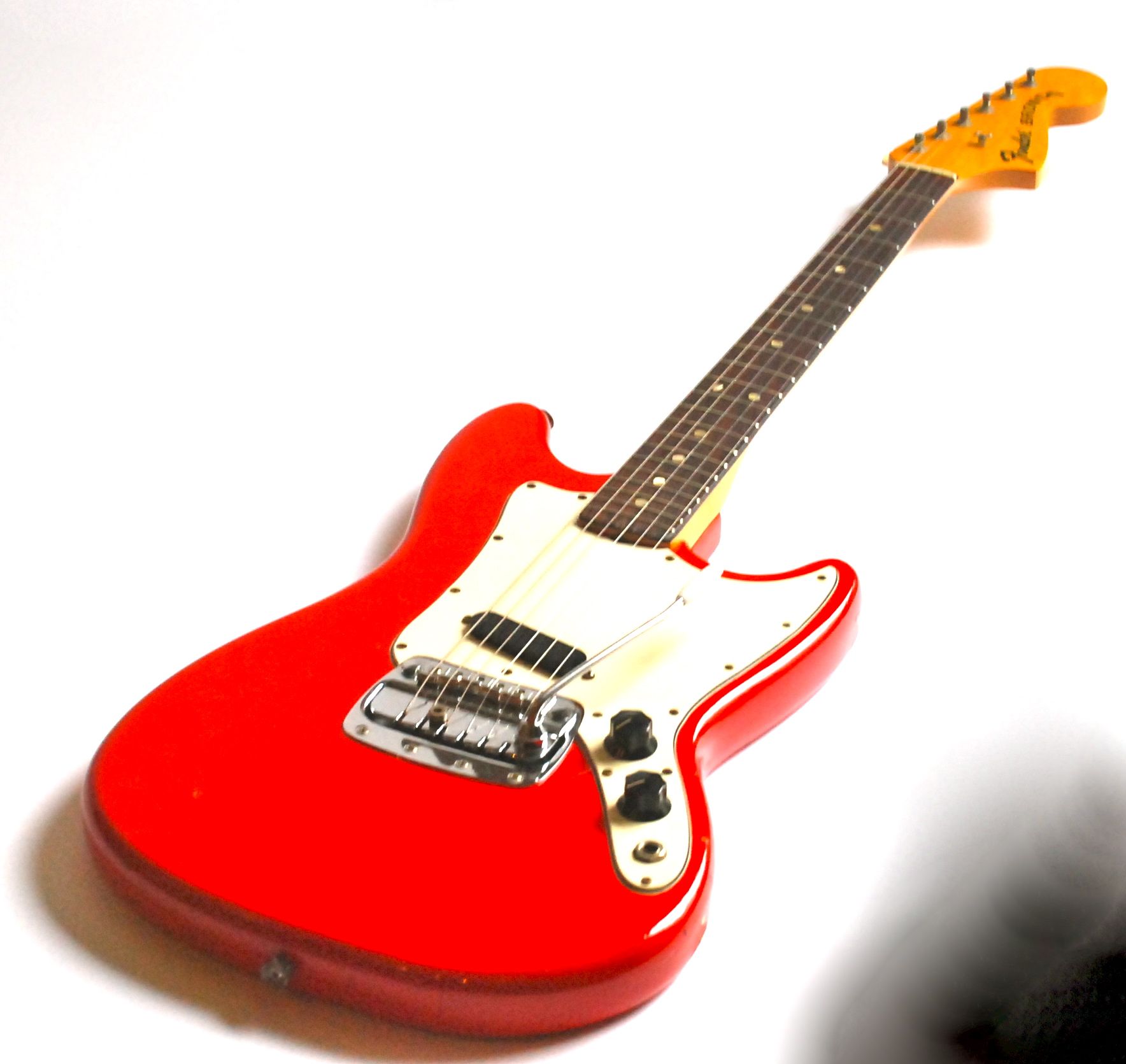

| FENDER BRONCO TREM Single Spring Fulcrum Vibrato Unique to the Fender Bronco |
 The Fender Bronco was a student model guitar released in 1967 with it's own matching amplifier. It was a post-Leo Fender, "CBS" era design intended to make a simpler, likely less expensive setup than the Mustang, as well as something kind of like the "Squier Starter Pack" products we see today. With this new Fender Bronco came a new pickguard shape (later adopted by the Music Master guitar in 1973), and of course, a brand new, unique Vibrato mechanism not used on any other Fender product since. Seriously, the only guitars to feature the "Bronco Trem" as many call it (it did not have an official marketing name like Fender's "Synchronized Floating Tremolo" or "Dynamic Fender Vibrato").
The Fender Bronco was a student model guitar released in 1967 with it's own matching amplifier. It was a post-Leo Fender, "CBS" era design intended to make a simpler, likely less expensive setup than the Mustang, as well as something kind of like the "Squier Starter Pack" products we see today. With this new Fender Bronco came a new pickguard shape (later adopted by the Music Master guitar in 1973), and of course, a brand new, unique Vibrato mechanism not used on any other Fender product since. Seriously, the only guitars to feature the "Bronco Trem" as many call it (it did not have an official marketing name like Fender's "Synchronized Floating Tremolo" or "Dynamic Fender Vibrato").
How the Fender Bronco Trem Works The Fender Bronco Trem is sort of a crossover between the JAguar/Jazzmaster style tremolo by it's spring mechanism, and a 2-point Stratocaster type vibrato (even though that came out later). Basically, the string tension is counteracted by a single, adjustable spring, held against a "cup" by a "plunger" on the bottom. The adjustement screw goes through the bridgeplate and the "cup" and is affixed via threads into the plunger unit. When the bar is pushed, this compresses the spring, and loosens the strings, and when pulled up, this pulls the strings tighter and loosens tension on the spring - using string tension to pull the guitar sharp. Range, due to the wider arc, should be pretty wide. Without having used a vibrato like this, the flaws I can already see in the design, is how the strings are held against the bridge saddles by string tension like on a Mustang, but unlike a Mustang, the "tilt", because it's not a fixed arc further outward on a separate pivot - but rather the whole shebaing with the bridge saddles pivots, is likely to cause the strings to lose contact with the saddles, possibly causing a extreme and bizarre drop in pitch once the strings lose contact (not to mention sustain), sort of a "Yodeling" effect, if the bar is used to an extreme like I would. I think this is why they chose to use a Jaguar-Jazzmaster like spring setup on this model to limit the range of motion to make sure of a high likelihood of the strings staying against the saddles when in use. Setup Ideas Improvements in the Design The first thing that came to mind when I was writing the technical info on this - would be to BEND the string attachment down into the body more. This would ensure that there's enough downward force on the bridge to hold the strings against the bridge saddles during a bar dive. The new saddles would have rollers built in and have some form of "side-pieces" to hold the saddles in place when unscrewed. The cool thing about this VIbrato's design is that you can literally adjust the saddles and not even have to retune much afterward as they are held in like FLoyd ROse Saddles but not at the mercy of string tension like a Floyd Rose. With the bent-back design, you could probably make a transposing unit out of this tremolo by changing the length of string behind the bridge....which would change their pivot arc greatly - possibly allowing enough room for all strings to stay in tune together during a bend. And it'd be very simple to do - just by putting a screw pointed up at an angle between the strings to move the "Jaw" back and fourth in the slot where the string comes out of - kind of like a Descendant vibrato unit. The wider the pivot arc, the faster the drop in tension. Higher pitches = less pitch change with the same arc than a lower pitch due to string tension, and the thicker the string, the more pivot it needs at a higher pitch to drop pitch correctly. So this is something I MAY explore with an original bridge design. |